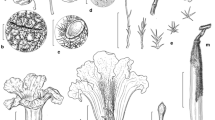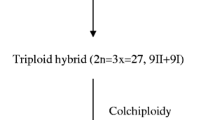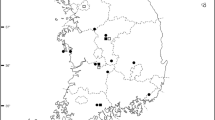Diplazium
with summer-green bi- to tripinnate leaves. Diplazium mesosorum and D. sibiricum var. sibiricum are sexual diploids (2n=82; n=41ll); D. chinense and D. squamigerum are sexual tetraploids (2n=164; n=82ll); and D. sibiricum var. glabrum is a sterile triploid (2n=123; meiosis irregular). Diplazium nipponicum includes both sterile triploid and sexual tetraploid populations. The triploid is larger in relation to several morphological characteristics and occurs in more southern regions than the tetraploid. Allozyme analysis suggests that the triploid is a hybrid of recurrent origin between the tetraploid and an unknown diploid. Diplazium × bittyuense is a sterile tetraploid, and the mitotic chromosome number, meiotic chromosome behavior, and allozyme analysis confirm the working hypothesis that it is a hybrid between D. nipponicum and D. chinense. Apomicts are not found within Diplazium with summer-green bi- to tripinnate leaves, and the taxonomic complexity can be attributed to polyploidy and natural hybridization.
Similar content being viewed by others
Author information
Authors and Affiliations
Additional information
Received 3 March 2000/ Accepted in revised form 19 April 2000
Rights and permissions
About this article
Cite this article
Takamiya, M., Ohta, N., Fujimaru-Takaoka, C. et al. Cytological and Reproductive Studies of Japanese Diplazium (Woodsiaceae; Pteridophyta). II. Polyploidy and Hybridity in the Species Group with Summer-Green Bi- to Tripinnate Leaves. J Plant Res 113, 203–215 (2000). https://doi.org/10.1007/PL00013930
Issue Date:
DOI: https://doi.org/10.1007/PL00013930




